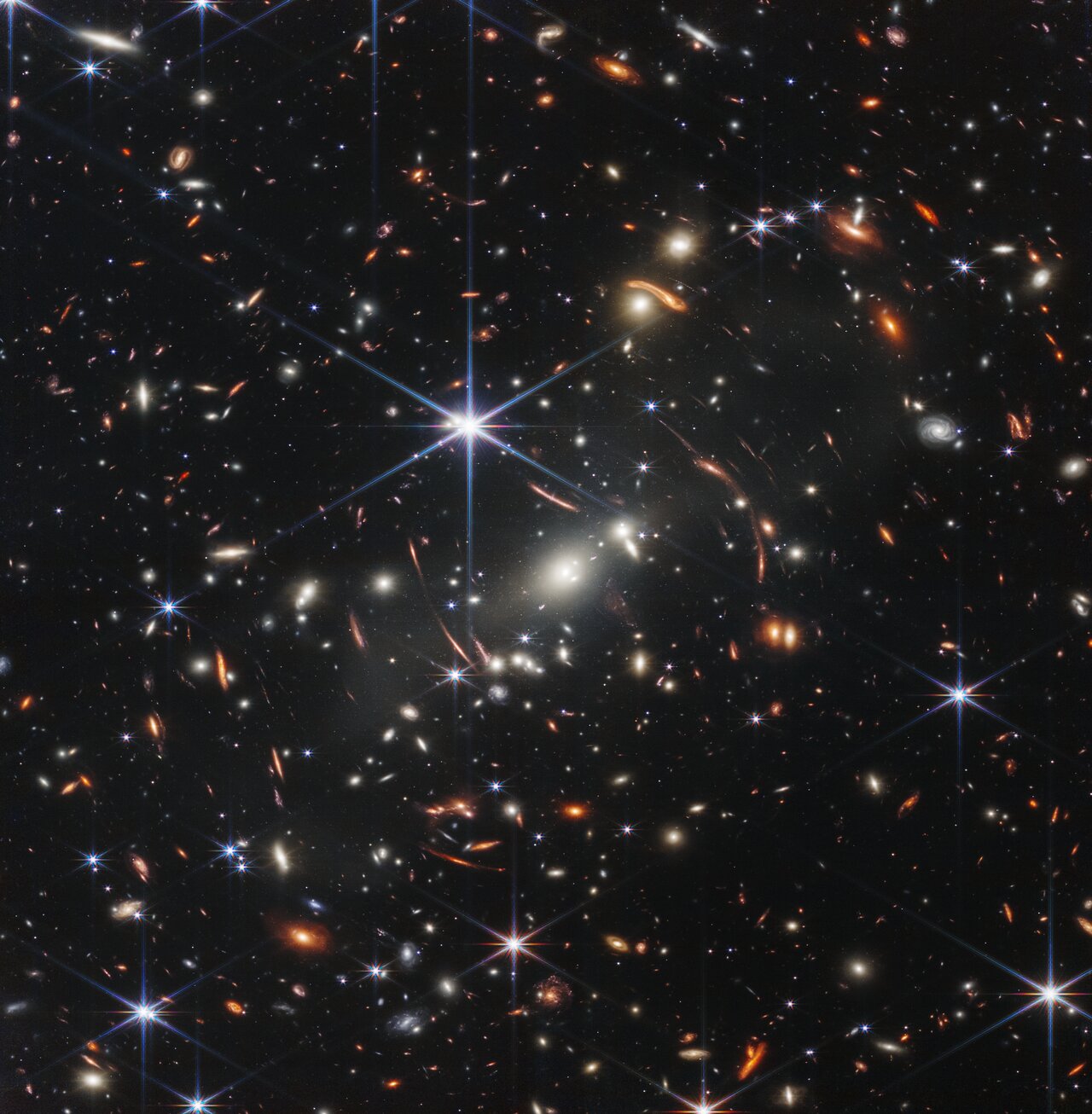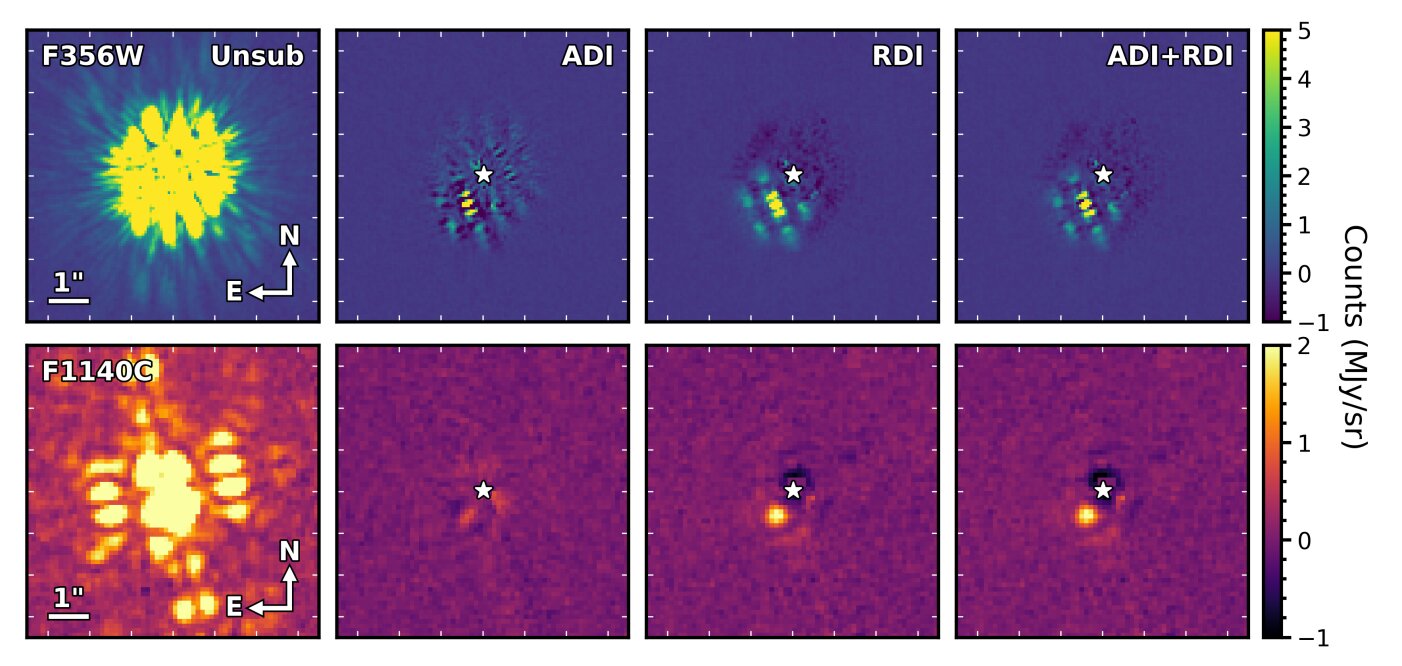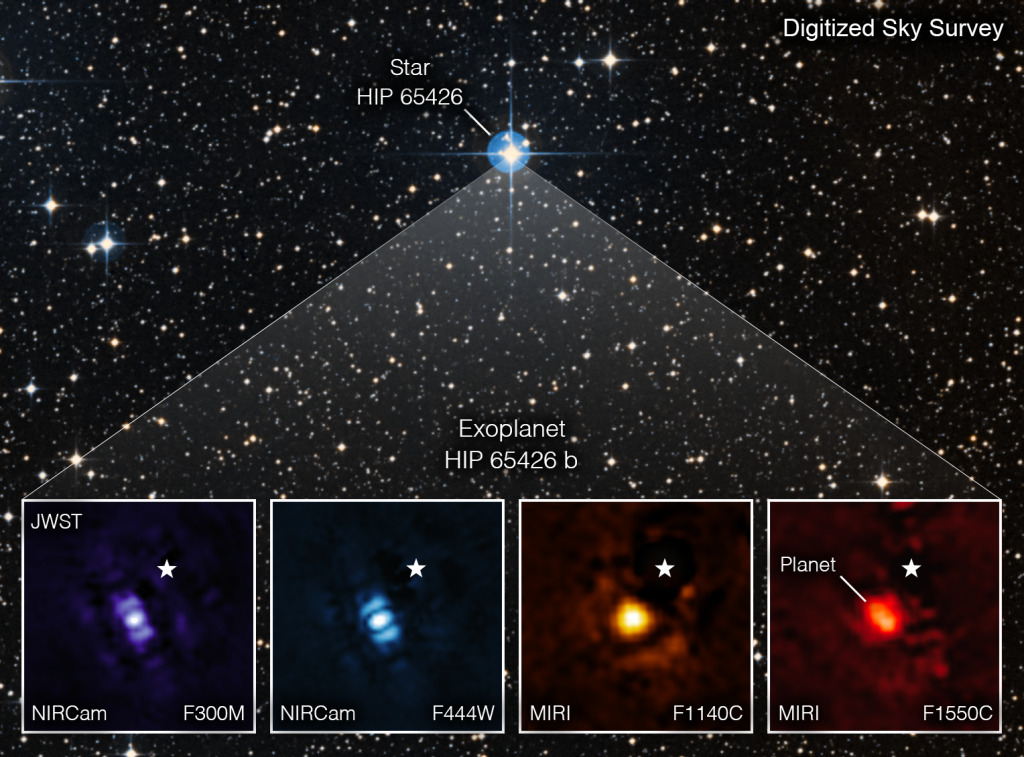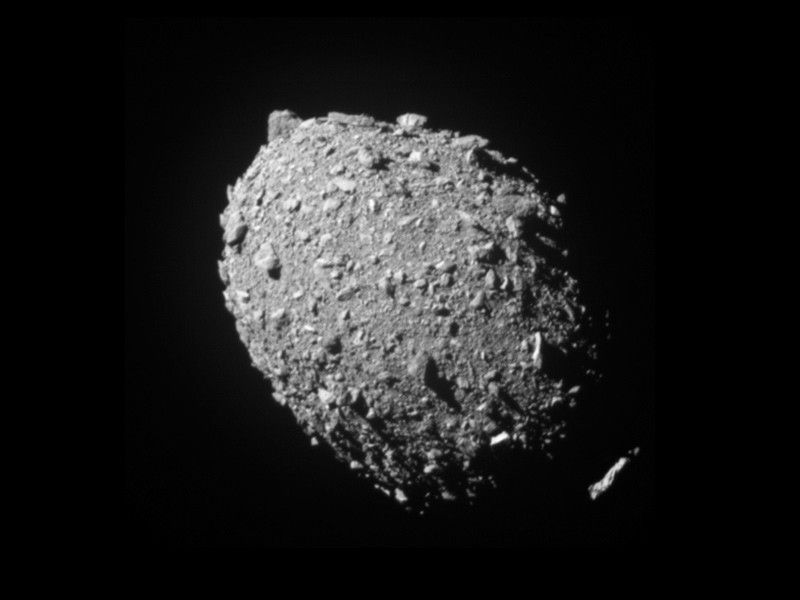Happy New Year!
Normally, a recap like this is done at the end of the year and not at the beginning of the following year. However, between the mince pies and mulled wine, it was increasingly difficult to whisk myself off the sofa. This recap is mostly for myself. After completing a data science internship in a fintech company and then moving to Spain for a few months, I’ve been sort of out of the loop on my astronews. I have a need to catch up on all the exciting gossip the cosmos has to offer. So here you go, the astronomy recap you’ve all been waiting for!
The James Webb Space Telescope
Let’s get the big one out the way and then we can move on to some other things. Yes the James Webb Space Telescope succeeded(!) in its travels! I’m sure I wasn’t the only one feeling nauseated from nerves. Given the seemingly infinite potential setbacks and obstacles at every step, I’m honestly still shocked we’re getting images. I could really write a whole post dedicated to just JWST, which I might do later. But for now, here is a summary.
History: Plans for building Webb started in the mid to late 90s, with the goal of building a much larger and colder telescope than Hubble that could look at longer wavelengths and be much more sensitive to see farther back in time.
Technical: There are many different parts to Webb. But the three most important parts are:
- The mirrors: which is the yellow honeycomb structure. This funnels light to the cameras and instruments.
- The ISIM: which is the science part where all the science happens. Ie infrared cameras and instruments.
- The sun shield. Very important because the telescope needs to be extremely cold to be sensitive to infrared wavelengths - below 50K!
Launch: While technically launched into space in 2021. The telescope took 6 months to make its way to Lagrange point 2 (1.5 million km away), deploy all its parts, cool down and calibrate all its instruments to be fully operational. And it was a nail biting 6 months I’m telling you. Thousands of scientists and engineers all over the world, who had dedicated their entire career to JWST, held their breath and crossed every finger and toe they had. They must have done their jobs well because it went perfectly! Here is a cool video of the deployment part: James Webb Space Telescope Deployment Sequence
Science: So in July 2022: “Science operations!” Webb’s science mission began and the first images were released! And every astrophysicist was drooling in anticipation for these images.
There are many many things that JWST has already discovered. But here are 3 I thought to be worth mentioning:
Deep Field
One of the first pictures captured by JWST was the Deep field. It is the most detailed and sharpest infrared image of the distant universe to date. It is a deep field image - which is an image of a small portion of the sky taken with a long exposure time, to see really faint objects. This one is of a galaxy cluster about 4 Billion light years away. You can see thousands of galaxies in the image.
 Image credit: NASA, ESA, CSA, and STScI
Image credit: NASA, ESA, CSA, and STScI
If you look carefully you can see some galaxies have a distorted shape and are sort of stretched or magnified. These stretched galaxies are NOT actually in the cluster, but BEHIND it. This is due to the effect of gravitational lensing. Because the cluster is so massive the gravity can bend and magnify the light of distant galaxies behind the cluster, and make them nicely visible to us astronomers on Earth. How thoughtful.
The Pillars of Creation
The next image should look familiar, as it’s been plastered on every astronomy blog/magazine/article/msn page last year. The Pillars of Creation! The Pillars of Creation in the Eagle Nebula has long been one of the Hubble Space Telescope's most iconic images.
Fun Fact, the name "Pillars of Creation" has its roots in a sermon called "The Condescension of Christ," given by a pastor in 1857. The sermon spoke about Jesus supporting creation, which was later applied to this Nebula, a vast region of cool gas and dust where new stars are formed.
However, because Hubble only captures visible light, the mountain of gas and dust hide the “creation” inside them. Cue JWST’s Near-Infrared Camera, with its infrared gaze it can pierce through the swirling clouds of gas and dust unveiling the frenzied energy and bubbling excitement below the surface.
 Credits: NASA, ESA, CSA, STScI; Joseph DePasquale (STScI), Anton M. Koekemoer (STScI), Alyssa Pagan (STScI).
Credits: NASA, ESA, CSA, STScI; Joseph DePasquale (STScI), Anton M. Koekemoer (STScI), Alyssa Pagan (STScI).
Comparing Hubble’s image and JWST’s image you can see the difference in detail in the mountainous landscape of the pillars, resembling an ethereal world. It makes one want to burst into evocative poetry. *Cough cough*
Lava spews from fiery orbs
Glowing crimson from a Sun that still forms
Where supersonic blows between jets and dust reside
Premature stars ejecting gasps and cries
Bleeding and bubbling inside their mothers gut
Pressure building, fusion and heat
Loud excitement spills from the womb of the Nebula
Illuminating the crystalline vapor
How’d I do?
Anyhow, this beautiful image will help us understand how stars emerge from dust over millions of years.
JWST’s First Direct Image of an Exoplanet
Last but not least, the JWST took its first direct image of a planet orbiting a distant star, proving its potential to revolutionize exoplanet research.
So normally exoplanets are observed through other means. A popular way is a transit observation, where you see a planet cross over a star and measure the “dip” in the brightness of the star as the planet crosses over it. But here we have a DIRECT image which is crazy. There have been other direct observations of exoplanets but only a small handful. So this shows the JWST to be very sensitive.
Direct images are very difficult to capture because of the high contrast between the star and planet. The star is many times brighter than the planet and will produce a diffraction halo which is when the edges of a star get diffracted. We won’t be able to see the planet beside it because of the small angular separation between them, and the diffraction halo expanding over the view of the planet. Thankfully with some clever scientists, instrumentation and image processing, we can reduce the image. In the image below you can see the unsubtracted image on the left hand side, and the fully subtracted image (where the light of the star is taken away) on the very right. It shows the planet as a little blob, and the little white star is where the star actually is! The top line is using the Near-Infrared Camera (NIRCam) and the bottom is using Mid-Infrared Instrument (MIRI), each slightly different bands of infrared light.
 Credits: NASA, ESA, Aarynn L. Carter et al (2022).
Credits: NASA, ESA, Aarynn L. Carter et al (2022).
The super-Jupiter gas giant is orbiting our friendly neighbouring star with the catchy name HIP 65426 a mere stones throw away of 385 light years (for comparison the Milky Way is 100,000ly across). There are a number of things which made this particular planet easy to spot directly, it's very far away from the star; 100AU, for reference Pluto’s orbit is 40AU, and it’s about the size of 12 Jupiters, meaning it was a great candidate for direct imaging.
 Credit: NASA/ESA/CSA, A Carter (UCSC), the ERS 1386 team, and A. Pagan (STScI).
Credit: NASA/ESA/CSA, A Carter (UCSC), the ERS 1386 team, and A. Pagan (STScI).
First Sagittarius A* Event Horizon Telescope Results
The Event Horizon Telescope (which is not actually a telescope, but an international network of radio observatories that work in unison to form one big Earth sized telescope to observe black holes) has captured the first image of Sagittarius A* which is the supermassive black hole in the middle of our galaxy. Although the observations were taken in 2017. The publication was released in 2022. Although we’ve theorized for a long time that there’s a black hole at the center of the galaxy due to it being a powerful source of radio emission and observing stars swirling around an invisible nothing, this is the first “direct evidence” of it being here. How cool!
How does one photograph engulfing blackness? Well, you can’t. You can only capture what’s around it. You can see in the image below there is glowing gas around a shadow. The powerful gravity of the black hole is sucking in all the surrounding light and molding it into a bright ring.
 Credit: EHT Collaboration .
Credit: EHT Collaboration .
You may remember an image of a black hole (M87*) being captured a few years ago, however this was from M87, a different galaxy than our own. Apparently Sgr A* was significantly more difficult to capture than M87*. The black hole in M87 is huge and much bigger than ours. So the bright gas orbits M87* very slowly making it a steady target, compared to our teensie weensie baby Sgr A*, in which gas whizzes round the black hole in mere minutes, making it difficult to get a nice, non blurry image.
Black holes are a prediction from Einstein's theory of general relativity, but they are now understood to be real physical objects. There are a few solutions to Einsteins theory of black holes. One of them is the Kerr metric which is when the black hole is spinning on it’s axis. It’s thought to be developed from the gravitational collapse by a massive spinning star or from a collision. The Kerr metric describes the spacetime around the black hole which is determined by the black hole's mass and angular momentum. Luckily, the images of Sgr A*, directly align with the predictions of the Kerr metric! Hats off to Einstein (yet again! Leave something for the rest of us) and to the Event Horizon team for accomplishing an amazingly difficult task.
Now scientists have images of two black holes of different sizes so they can delve and dig in further to how gravity works in these extreme environments. There’s a lot of mysteries to solve around black holes, so I am looking forward to what they discover.
Artemis I moon mission launches
In November an unmanned spacecraft flew around the moon and back to Earth. That may not seem extremely groundbreaking, but that spacecraft in the future will hold humans! The mission was Artemis I, and is the first in a series of missions that will explore the Moon (and even Mars). The astronauts going on these future missions will be the first people on the Moon since 1972! The mission used the Orion Spacecraft, a reusable spacecraft to carry crew, and the Space Launch System (SLS) which is a super heavy duty rocket launcher, the most powerful to date. This mission is sort of a tester, to make sure Orion has a safe re-entry, descent, splashdown, and recovery prior to the first flight with crew on Artemis II.
The longterm goals of the mission are to assemble a "Lunar Gateway", which is a Space Station in the Moon's orbit, and to have yearly landings. Thankfully Artemis I came home safe and sound on the 11th of December, splashing into the Pacific Ocean after travelling more than 1.4 million miles around the Moon and back.
 Credit: NASA .
Credit: NASA .
Shifting an asteroid’s trajectory in space
Lastly, if you’ve ever seen Deep Impact, Armageddon or the extremely optimistic film Don’t Look Up, you may wonder how effective our world leaders would be in a pinch if an asteroid was rolling towards earth. Fear no more, because in late September, NASA successfully completed the first test mission for planetary defense (although, no attractive hollywood stars were apparent). They crashed a spacecraft into the small asteroid Dimorphos, which orbits the larger asteroid Didymos. The Double Asteroid Redirection Test, or DART, demonstrated deflection technology that could potentially be used to protect Earth from an asteroid strike. They managed to alter the asteroids orbit by 32 minutes.
Poor DART sacrificed themself in the name of human safety. The rocky surface of Dimorphos was the last thing DART saw before crashing into the asteroid. The image below was taken by DART 11 seconds before impact. Sniff sniff.
 Credits: NASA/Johns Hopkins APL .
Credits: NASA/Johns Hopkins APL .
P.S type in "NASA dart" on google and see what happens. Trust me.
Conclusion
My goodness I’ve not even cracked the surface there’s so much that has happened last year. But I think I better stop now before I bore my audience. Hope you enjoyed this recap! Stay tuned…
References
JWST: NASA
Deep Field image: NASA
Pillars of Creation: NASA
Direct Image of Exoplanet:
NASA,
arXiv:2208.14990
Sgr A* Black hole:
Event Horizon Telescope Collaboration et al 2022,
EventHorizonTelescope.org
Artemis I: NASA
DART: NASA